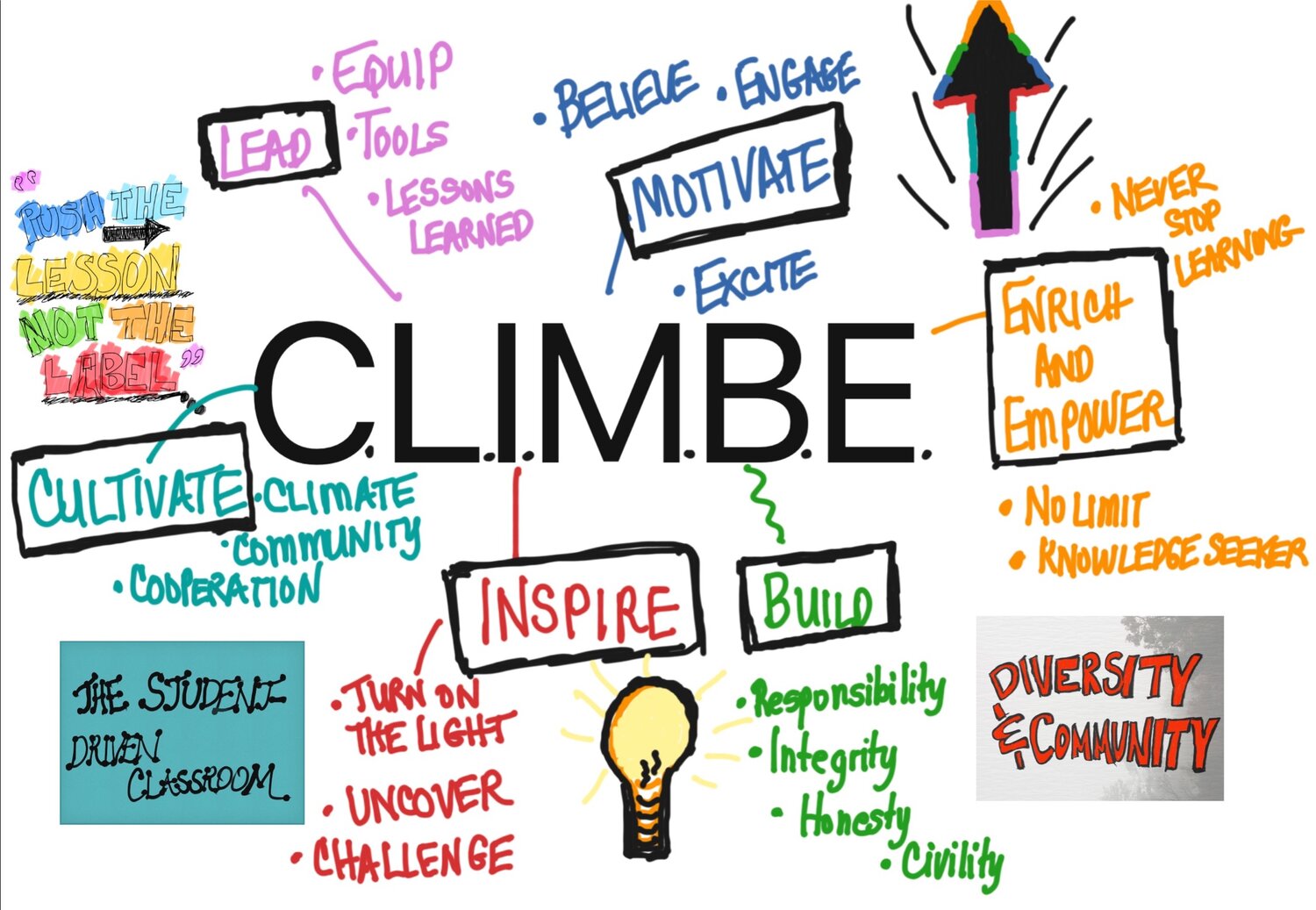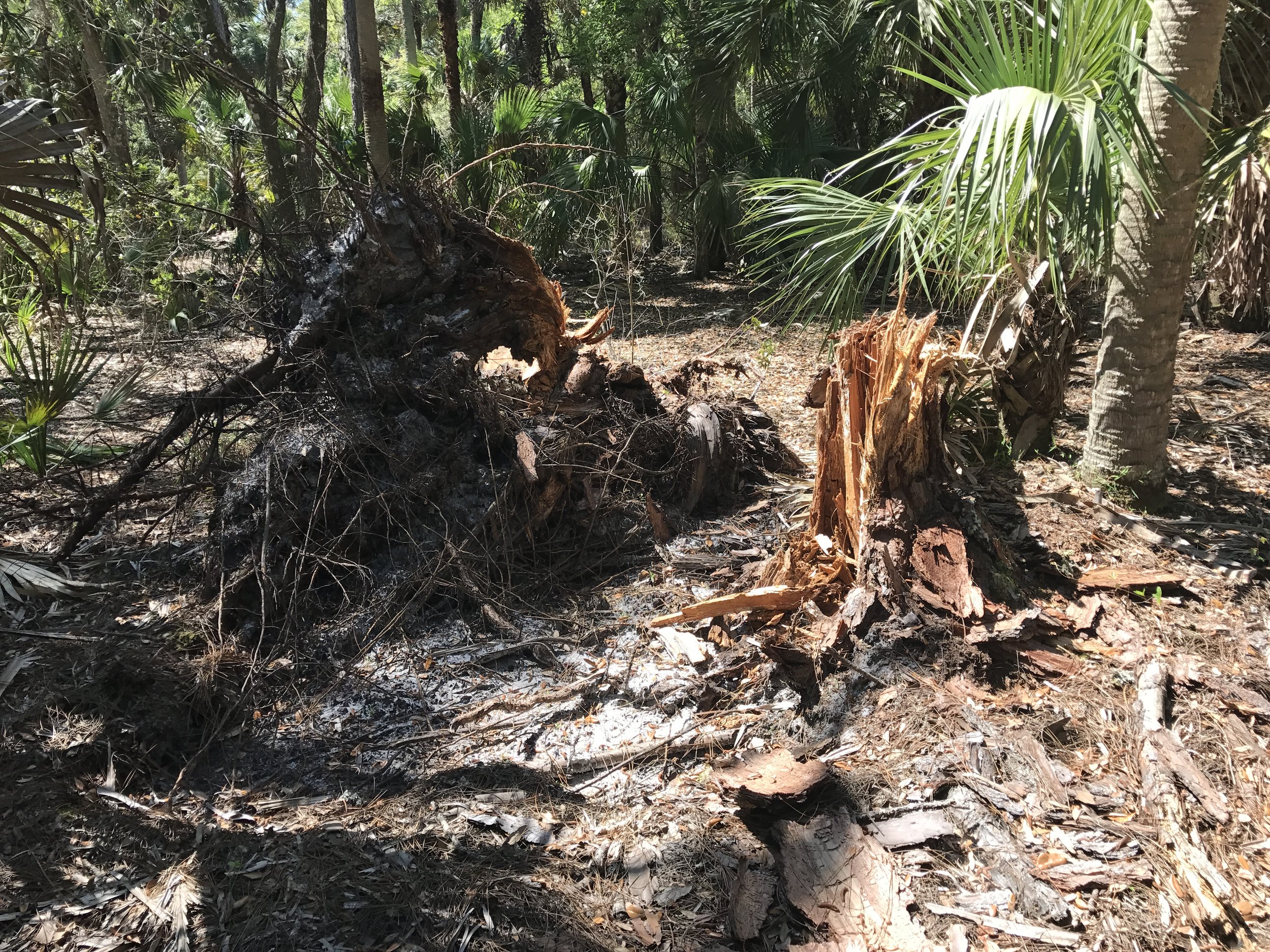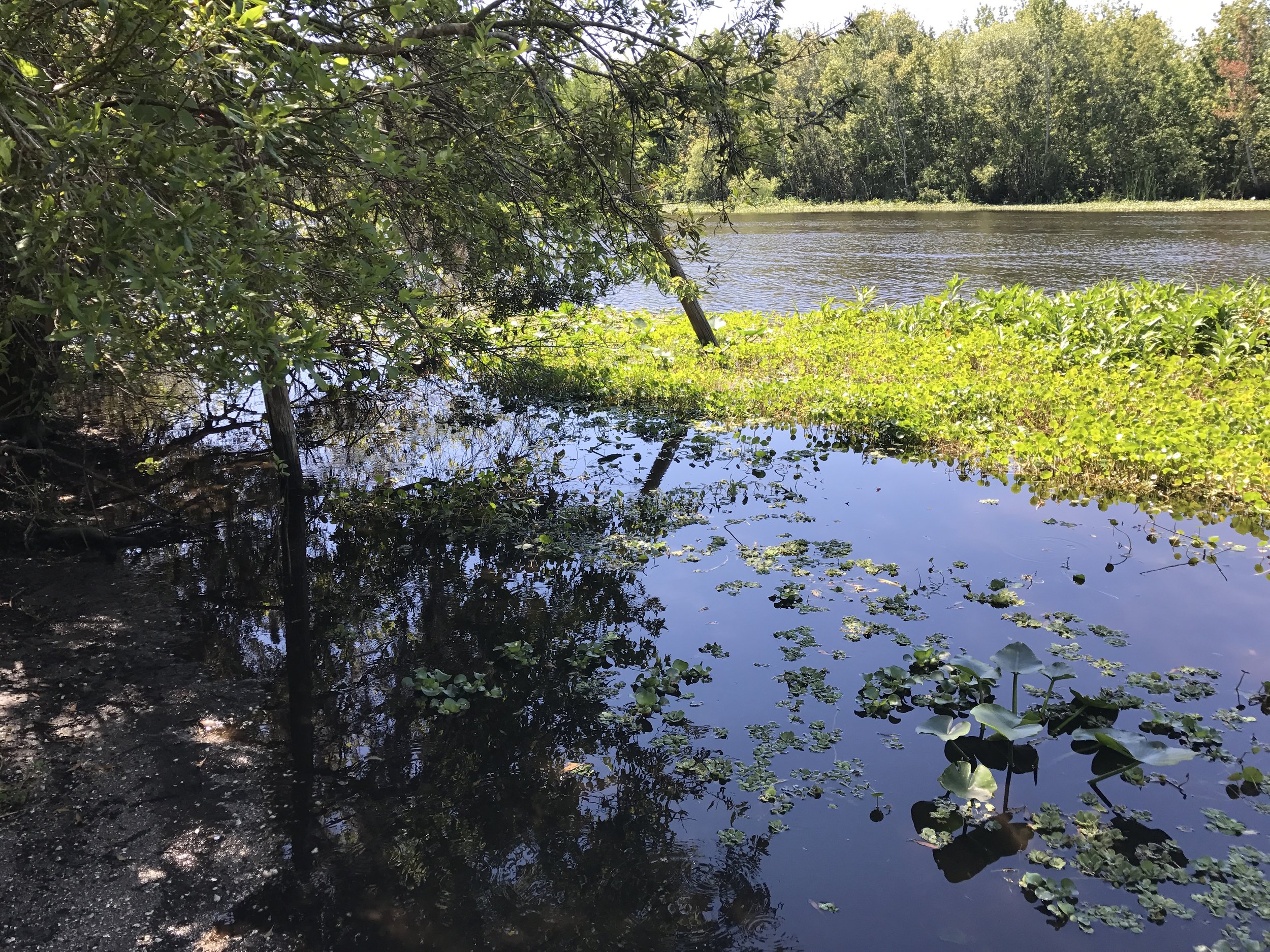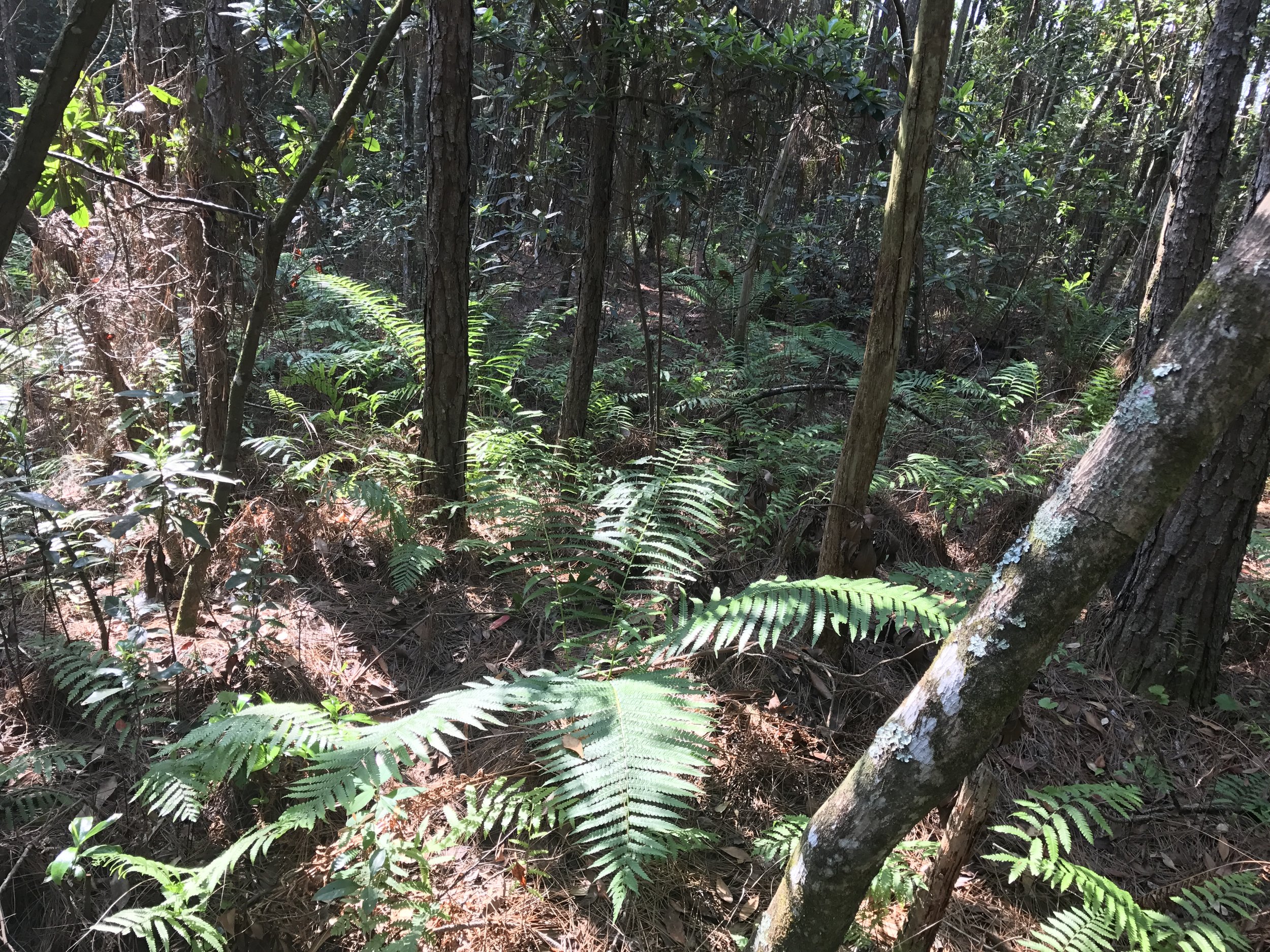Guest Post @soperwritings: Cultivating Classroom Culture
Without a proper classroom culture, are we really making the most of teaching and learning? Check out @SoperWritings to get his take on things!
Guest Post @soperwritings: Cultivating Classroom Culture
Cultivating a Learning Culture that Empowers Students
As a middle school social studies teacher, one of the very first things I teach my students each year is a unit on culture. Sure, the concept of culture is first up on my curriculum guide, but the overarching concept of culture is something that is essential to setting the tone for a productive year.
We begin the unit as most would expect: we define culture, we identify our own cultural markers, and we examine the cultural makeup of key civilizations throughout history.
But then we take a turn. I shift the conversation from cultural identification to cultural activism; we look at how the problem of cultural extinction is rapidly changing the face of our world. The students engage with stories from the past and from the present about how real people are faced with the challenge of carrying on and preserving cultures that are fading away forever.
For my students, the culture unit is no longer about defining cultural elements, it becomes about cultivating and preserving cultures in the face of increased globalization.
This may seem like a heady ask for a room full of 12-year-olds (…and it is), but by infusing a sense of agency into the learning, students buy in. They aren’t learning because they have to, they engage because they have a felt need to learn. By learning about culture in this type of classroom environment, I am setting the table for a classroom culture that will empower my students to be active learners.
Empowered learning is engaged learning
This trend of trying to motivate students to learn from an intrinsic place can be truly challenging. I have spent time as a part of a Learner Active Technology Infused Classroom (LATIC) cohort over the past three years that has worked to try to bring about this fundamental shift in our respective classroom pedagogies. It’s a lot of work, but it’s important work.
The studies are out there, but any educator who has had the experience of watching a student or even an entire classroom of students chasing knowledge knows the impact of a learner-driven environment.
In order to do so, whether it is in a classroom or a small group tutoring environment, there are a litany of considerations that need to be made:
- Students need environments that are differentiated and choice-driven.
- Students need meaningful task statements and unit rubrics to help guide students through their choices and growth.
- Students need access to technology and resources to be able to pursue their self-driven learning.
- Perhaps most importantly, students need authentic assessment experiences where they are expected to engage with real world issues. After all, learning without a goal or any potential for true impact will come at the expense of student buy-in.
The educator as a resource rather than the tour guide
Again, this type of pedagogical approach takes a lot of work. There’s no denying that. But when students are the ones running their own show, it frees up the educators to facilitate learning on a one-to-one or small group level rather than trying to apply a one-size-fits-all approach.
In an era of increased automation and privatization, the best educators are the ones who are able to create meaningful connections between students and content. No computer program or software suite will ever be able to do that!
By front-loading the preparation efforts to create student-driven experiences, the relationship between educator and student can be tailored on the fly to help create true understanding and engagement. These are the classrooms of the future.
Sheldon Soper is a ten year veteran of the teaching profession and currently serves as a junior high school teacher in southern New Jersey and as a writer for The Knowledge Roundtable, a free tutoring marketplace. His primary focus is building reading, writing, and research skills in his students. He holds two degrees from Rutgers University: a B.A. in History as well as a M.Ed. in Elementary Education. He holds teaching certifications in English Language Arts, Social Studies, and Elementary Education. You can connect with him on Twitter @SoperWritings.
Celebrating Diversity & Building Community
IMG_1040
This blog post is partly in response to an extremely intriguing and moving conversation at EdCampHCPS on Saturday, April 1, 2017, and no, it wasn't a joke! Haha. Aside from that, it has played an essential role in my own beliefs and practices as an educator. Thanks to Zac, Alex, Amber, Bryan, Nik, and Maria. What an awesome conversation we had!
I was so fortunate to have been able to attend EdCampHCPS this past Saturday and not only that, but be able to facilitate a session or discussion or conversation about this topic: "Celebrating Diversity and Building Community." I find it important to start with a the why of celebration and building, but further, to identify a working definition for both diversity and community. I believe we are blessed to live in a world that includes different types of people whether those differences are realized through gender, race, culture, language, opinion, viewpoint (perspective) and life choices even.
This is an important conversation to continue to be had. Is there a mold that students are expected to fit in when we really are all different with different backgrounds and experiences that must be taken into account because it makes us who we are? Is there a mold that we as educators are expected to fit in? Are we being asked to change the very essence of who we are rather than attempt to understand & celebrate diversity? The discussion ensued that students are often stripped of their diversity when we expect them to be who they are not, or to fit a predefined mold. How often do we as educators enter the classroom and assume this position: "This is how we do school," even unintentionally? Consider how we limit the learning experiences of students when we choose to intentionally or unintentionally expect every student to be the same.
Suffice it to say we were able to start the conversation at #EdCampHCPS, but we were far from ending it at the time that we were scheduled to move onto the next session.
Thus, the term diversity seems to encompass a whole lot more today than may have been identified years ago, or even captured by dictionary definition. How do you define diversity? Merriam Webster defines diversity as: "the condition of having or being composed of differing elements OR the inclusion of different types of people (as people of different races or cultures) in a group or organization OR an instance of being composed of differing elements or qualities." Why is diversity, specifically celebrating it so important? Melissa Etheridge qualifies diversity as our greatest strength as a nation but furthers her thought to suggest that it too has the power to break us down when we choose not to see the value in it and how it has the power to build bridges, fill gaps and connect us."Diversity is not judging a situation before trying to understand a situation."
Everybody has their own piece of the pie and the pie becomes whole when all of the pieces come together. Or consider the puzzle, if you will. Everybody has something valid to say, but we need to be open to hear it!
IMG_1232
Diversity: the art of thinking independently together. I must say that I agree with these sentiments because I do not see how we will ever lose our difference. However, I do see how those differences can not be capitalized on when we choose to stay separated. We can be different and we can be together. Let's embrace our "different" while we sit at the table together.
IMG_1228
When you think about Dr. Martin Luther King's words here, you can see that though we all have stories, his goal was to bring change to serve the greater good. My perspective is that when we shift our focus on bringing change at this great a scale, it ultimately affects everyone anyway, including ourselves. It does not see us as separate and disconnected, but rather connected at the very core, and only separated due to viewpoints that have not come to the table of "together." What I mean is that there is great value in our own individual perspectives and viewpoints, but there is an immense power when we can bring those all together and reason.
IMG_1227
Where would we be without our ability to see. Let me be clear though, it is possible to be able to see and yet have no vision. We need a call to action. We need to not only understand the why of diversity but also things that we can do in order to bring change to our current understanding and fully move forward with the vision of understanding the role that each individual plays and the power that is created when all of these individuals have the space and time to come together.
IMG_1231
I think it is highly important for students to learn about other type of people, other cultures, others' backgrounds because when this can happen, we can understand for example, why people do what they do and understand how this new learning can improve the individual. I am better when I know a little Japanese, because I then can communicate with Japanese people. The wall or barrier that would have limited me before is removed when I am able to immerse myself into the learning about others that ultimately builds a bridge where there was once a gap.
IMG_1234
How do we take what could rip us apart and translate that into something that revolutionizes us? Melissa Etheridge's thoughts here really make me think. I find it to be amazing that this understanding or lack thereof can build bridges or tear them down. I have personally been in situations that as a black male I am looked upon as someone out to hurt or harm, when truly that could not be farther from the truth. Stigmas and stereotypes exists and often I feel the burden on my shoulders to be the antithesis of what we currently experience. I think this is a perfect example for how we may judge a situation prematurely rather than being open and willing to connect with people, because there is certainly a strength that comes when we take the time to be intentional about understanding and knowing that everyone is not the same, but that they may have an experience that will change me, or make better.
IMG_1229
So on the topic of student support, I believe that we must first learn about our students and their needs before we are able to support them. How are students best supported? Do they all have the same support needs? The answer is no. I believe that it is time well spent when we first understand that yes, we are different and ultimately when we are able to affirm the difference in students, the quicker we are able to use those differences to benefit everyone.
IMG_1636
Involvement is essential. We cannot make diversity and community big ideas unless we have others involved. How can be make it a focus? My goal is to include, whether directly or indirectly, a focus on diversity and community in every lesson that I teach or in every activity that I ask students to engage in. I want them to understand how what they are doing now is reflected in the real world and the connections between them. Not only are we speaking of meaningful learning here, we are talking about getting them ready for real challenges or experiences.
IMG_1226
Empathy is so important. You might define empathy as the ability of one to understand and share the feelings of another. Is it important to integrate this idea into our classrooms? Absolutely. Why? It would totally make us more mindful of what, how and why we do before we do it. It fosters an appreciation for this around us and how we can all help each other in this tangled web we weave.
IMG_1233
How do you define community? With regards to community, what thoughts come to mind when you view the pictures below? In what ways do these images reflect "community?" Merriam Webster provides the following as a definition: "a group of people with a common characteristic or interest living together within a larger society." When think about the following pictures below, I understand that each aspect of the environment or these living elements in the same place, has a role to play. They may have a common interest in the sun, or in oxygen and so while they may be different in organizational structure, genetic makeup, physical characteristics, and even their upbringing or origination to bring it to where it currently is, they can commune together in these photos.
As part of the #FLEdChat Twitter chat on Wednesday nights, I have the fortunate opportunity to facilitate/lead a Celebrate Diversity ('Focus on Diversity') chat on every third Wednesday where the focus is on the importance of both diversity and community as these two components are married together. You can't truly have one without the other. Nevertheless, we converse about philosophy, practices, suggestions and even action plans for how we might embrace these two very important ideas in the classroom, creating the space for students to understand their importance as well as the education body at large.
One of the content areas that I teach is English-Language Arts. I love to integrate technology into the core curriculum at every effective moment. And as a result, this year I moved students from using a paper-and-pencil blogging experience to an electronic means of students responding to their reading, either nightly or at the culmination of each book. Students were able to "personalize" their spaces and make them their own. "Class Press" was the platform and unfortunately they are discontinuing the site as of October 2017. However, students were able to "interact" in a space where they shared about their texts and could comment on each other's posts and asks questions where appropriate. As the educator, I was able to do the same. It was also a great way to help students learn revising and editing, because they could make corrections to their posts at any time.
What I did not count on, or should I say "plan for," was the community that was built. Students really dove in to the idea of commenting on other students' posts. It was not strictly academic either; students were essentially "being themselves" within this secure space. I was able to introduce students to Digital Citizenship as well and how to appropriately respond or pose questions to others. Students had many "coming together" moments and continue to do so, although the platform begins to lose viability as it comes to an end this year. Students literally had conversations about the books as well as many generic topics or writing topics they chose to put on the site. It was enlightening to see the students be able to conduct themselves in such a mature manner as fourth and fifth graders. I am very curious about the direction I will take now, as I want to continue to have students blog in a secure space. I have definitely put a plug out there to Fresh Grade, an e-portfolio platform that I already use, as it will be yet another layer of ability and resourcefulness for the already booming student-centered company.
In summary, instilling an appreciation for diversity and community is of great importance, as it serves the greater good. It points to the idea that we are better together. And in the words of Josh Groban, You Raise Me Up, to more than I can be.
The Power of a Conversation
Eric Schlosser states:
"Different people, in good faith, can look at the same fact and interpret it differently. But that's where an interesting conversation begins."
I find it very interesting how with all the technology that has made communication amongst people more efficient, it at the same time may be the go-to for communication as opposed to the traditional face-to-face gatherings that still have the power to spark electricity, identify common ground and insight movements in the forward direction. Such a conversation was had on Saturday, March 18, 2017 as a fellow educator and I traversed the lengthy alligator-filled pathways of the Lake Woodruff Wildlife Refuge in Deleon Springs, FL.
While I did not think quickly enough to document the entire conversation, I was able to capture much of the meat that was both relevant and affirming. I will do my best to transcribe that here today.
Male teachers in education are a rare breed and what power there is when male educators particularly in elementary education take the reins and are all in, in terms of impacting a generation.
Listening to students is so important.
We talked about blended learning and multi-modal learning. We all have different interests and if we approached teaching and learning from that angle, it carries over to the way in which our attention is grabbed in school. Can you give me a way to learn that interests me? I will be engaged if it interests me. Not, let's do this the same way because it's always worked. While that may be the way that is assumed because enough of the students are responding or due to it benefiting the school in terms of standardized assessment or school grade, what about the rest of the students? What about the students who fall through the cracks?
In the long run, this may create students that attach no value or meaning to learning and ask "Is this what school and learning is all about?" these students may resort to other avenues due to where they were no provided opportunity to explore what interested them. This could lead to increased amounts of students dropping out or not finishing because they felt they had no reason to. "If this is how things are going to be done, then I am going to check out" may be the thought that runs through many students' heads.
What would happen if we flipped that script? What if we started to actually pay attention to learning styles and student interests and tie that into the curriculum? In no way are we excusing curriculum needs and grade level expectations, however we should work to integrate them. I do believe it is possible to accomplish and in most cases exceed expectations if we tied in blended learning, multi-modal learning so that students are receiving knowledge in a variety of ways, not just sitting in a classroom listening to traditional lecturing all the time. They need to do, they need to get up, they need to move. Maybe with options and variety we empower students to be risk takers because there is variety, and that variety includes learning in ways that are not common to them, but learning nonetheless.
It encourages them to be more risky in their learning. It is not a one shot, all or nothing kind of deal, which is unfortunately a lot of what ends up happening due to standardized assessments. We must be held accountable yes as educators and the easiest way to do that is through test scores. However, if they really want to see excitement and kids learning and taking risks, it has got to go beyond that (Kim Howell-Martin). Schools that are under-performing are potential for extensive growth. If we gave kids opportunities and tried new things, even beyond flexible seating, we would see great results. Imagine how interests can even be developed when students are able to see things in a different way than traditional learning? We need to break out of the mold.
It gives new meaning to a PLN and lifelong learning. It is hard to get stuck in a place if you constantly learn. I need to continue to develop because I don't want to ever get to a point where I cannot reach the kids in my classroom. Making that bold declaration would imply by motivation alone that we WILL impact (REACH) 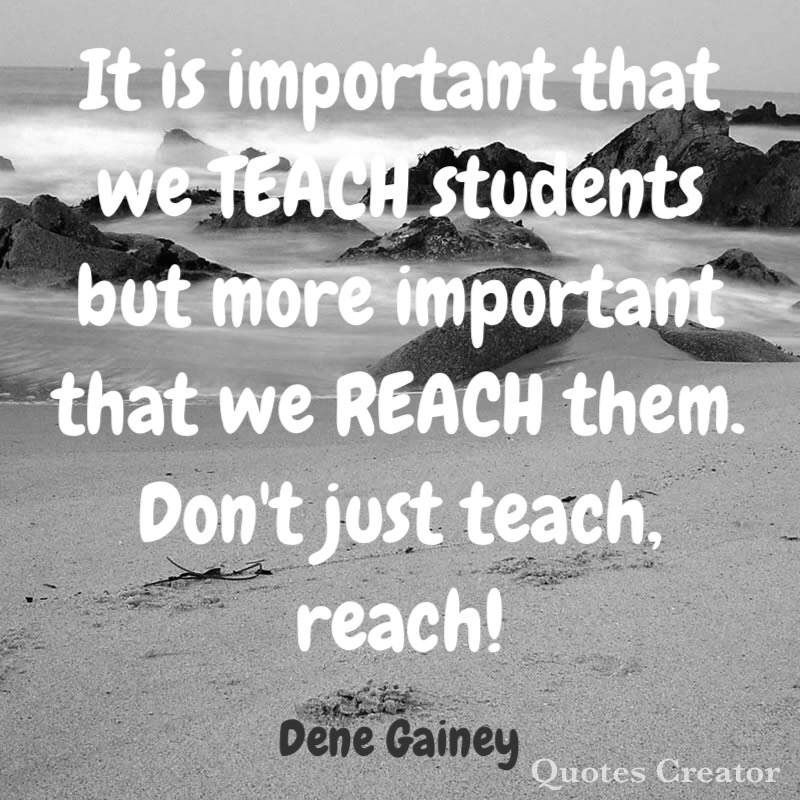 the students in our classrooms because we desire to. It is a constant transforming mindset. It cannot become stuck in a certain way when you are constantly molding your skill-sets and mindsets. In most schools (and if students stay), many teachers will teach each of the students. It needs to become a corporate effort to reach them. If educators approach their REACH differently, imagine how the students' mind sets, motives and drive to come to school in the first place would change.
the students in our classrooms because we desire to. It is a constant transforming mindset. It cannot become stuck in a certain way when you are constantly molding your skill-sets and mindsets. In most schools (and if students stay), many teachers will teach each of the students. It needs to become a corporate effort to reach them. If educators approach their REACH differently, imagine how the students' mind sets, motives and drive to come to school in the first place would change.
Kudos to the idea of when you can engage students in a variety of different ways, imagine how much more they will be motivated to come to your classroom and be independent learners and go beyond what you may set as the precedent in the classroom. They will want to go beyond that because you have empowered them with the tools. (Check out Chapter 9 of the Edumatch Snapshot in Education 2016 Published book) What can we do to stretch the kids to decide on what they want to do and then help them to open doors to opportunity?
"The only thing standing in the way of you and what you want to do is you."
What if our kids understood and embraced that thought? What if education at large actually validated that statement by not standing in the way? Motivation is huge. Do they believe they can? They need to SEE what is out there. They need exposure to things in order to develop and learn about what they may want. The whole real world aspect of things is a great way to expose kids. Applying meaning to learning essentially is looking at the real world. What is truly out there? Let's think organization for just a moment, why do we need it? Let the kids answer that question. This is a real-world expectation. We are learning the tool of organization today, why? Why would organization be important in LIFE? Can you think of situations where organization would make the difference between success or failure? Can you recall any personal experiences about how organization was helpful to you or your family? My point here is that connections to the real world are important and students begin to see how meaning is attached to things being taught due to their LIFE-connection. It goes far beyond my classroom. The light bulbs then come on, the habit is created, and then students have purpose for what they are doing.
I am challenging all of you that read this blog post to engage in conversations. You may never know the power inherent in something that is seemingly so simple if you don't start talking. Who knew that all of this would have come out of a simple walk in the wildlife refuge? Engage. Input. Listen. Learn. Spark. I can't wait to take this conversation piece further through student edcamps within the classroom where the students can also have conversations and they too can see the power! We've got the power!
“Good communication is as stimulating as black coffee and just as hard to sleep after.” ― Anne Morrow Lindbergh, Gift from the Sea
I Can't give you Success, but the Tools I Offer
Student empowerment is a big deal in classrooms of today. I believe it is safe to say that we (educators) want our students to not simply reproduce the knowledge that comes through the many varied lessons that we teach, but that we want them to construct knowledge, go after knowledge and even create new content. Is a dream worth going after without the tools by which one needs in order to ascertain it? As an educator, I have seen over my years of experience, the trickle down effect of increasing expectations for students. So as educators, we constantly evaluate and review expectations in an effort to have a firm grasp on the skill set(s) necessary for the students we serve. While we teach them in a certain grade or a certain class, I believe it is necessary to teach beyond that. It is limiting when we focus simply on what needs to be attained by the end of the year, as if to remove the opportunity for students to exceed those expectations. One of the things I have been excited to do this year was teach technology. Technology continues to advance, and quickly. I graduated with my bachelor's degree in the winter of 2003 and the iPad had not yet hit the market. How, 14 years later, the iPad is readily available, in many shapes, sizes, and versions. Having always had an interest in technology and gadgets, I always had something to play with and I remember well when I first purchased an iPad. Compared to the one I have now, it was much smaller in size as well as capability and storage space. I could only maximize it's function when connected to the wireless Internet. Oh but now, I have a larger device, capable of storing a huge amount of information, a Bluetooth keyboard that is attached to it, a case that is designed to convert to desktop computer style as well as the apple pencil that is connected to the iPad device via Bluetooth and can charge by plugging into the iPad itself. What I was not able to do in 2003, I am able to do in 2017 and in many cases, much faster or more efficiently. So consider the tools. Tools are necessary in order to accomplish a task. If I wanted to change the oil in my car, I would need tools in order to replace the oil filter as well as release the used oil from the bottom of the car. In order to build and compound knowledge, I need the tools that enable me to research, plan, execute and further my learning process. Tools are not simply hardware devices that provide some type of service to the learner, but may also include: organizational skills, encouragement, motivation, affirmation, space & opportunity, and perhaps even a model to follow after, albeit the educator himself or herself, or someone to whom the learner can look to for direction or guidance.
One of the phrases I use in class often is "prior planning prevents poor performance." I say it so often, that now all I have to do is start it and the students in the class will finish it for me. It has been ingrained into them as a practice and an understanding, or even a philosophy. It's a belief system. My goal is to aid in the development of good habits. Now even as adults, I am sure that we can all admit that we have procrastinated a time or two. However, it is my belief that we should teach students to be proactive consumers and producers of knowledge, rather than waiting until the last minute. Quality is always the desire over quantity. I further believe that you can tell someone something long enough that even if it was not believe at the onset, they will eventually begin to believe it and not only that, but see the change or the outcomes, or the reality of the thing they have been saying over time, out of routine or mere instruction even. "You are the best and the brightest," does wonders for motivation. It is amazing how many students feed off of the positive reinforcement and affirmation. Perhaps they don't receive such at home, or often enough, so I believe that it is important even in this way, to give students the tools we might call affirmation and motivation.
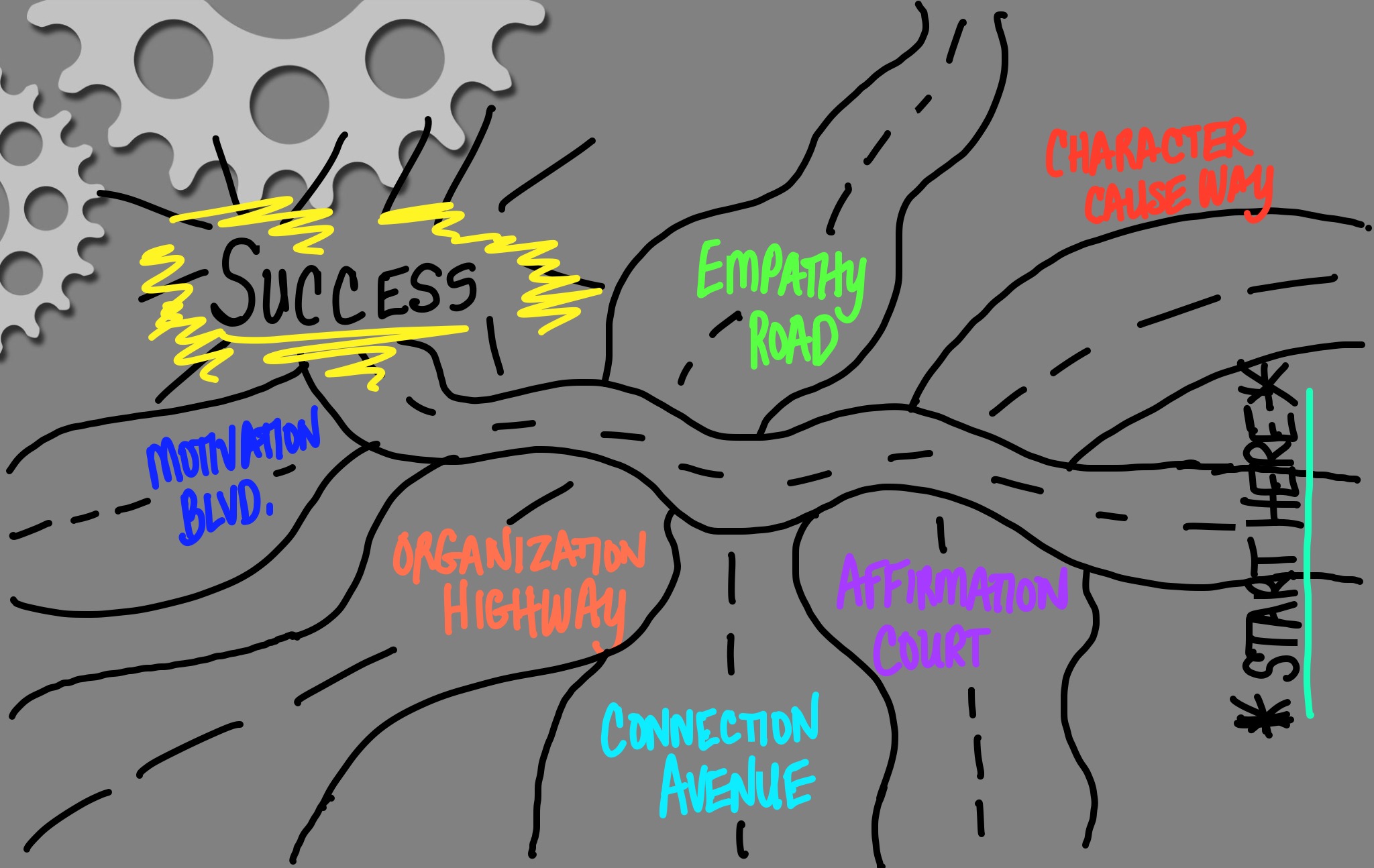
I further believe that when students are engaging in the learning process that meaning is attached when you can makes connections to their lives. Why does this matter to me? Why should I learn this? Well, "student one, when you read with feeling and expression it helps to captivate an audience, gain their full attention and ultimately deliver to them the information you have defined as important." In life, this equates to being able to deliver messages, having good listening and speaking skills. It may even include empathy and caring about those to whom you speak. This is a life skill. All of a sudden the electric current running to the light bulbs in students' heads is at an all time high. No longer am I learning something because "it's what we do" for 6.5 hours at school." It has new meaning and I know that what I am doing now (or not doing) is going to matter to me as I continue to learn, grow and develop.
App-Smashing
So this is something I have been focused on this year to get students motivated about "tools" that are available that support the teaching and learning that is already happening in the classroom. This technology class is set apart from the rest of the day, however, students are being introduced to so many different tools, available in the iPad that can be used to plan in the ELA content area, take notes, document learning or create based on learning that has taken place, which is the largest component (the application of knowledge).
Fresh Grade
This is an e-portfolio tool designed to connect teachers, parents and students in a Facebook-style electronic portfolio that individualizes learning and captures ongoing successes as well as areas to improve upon and reflect on. Not only can this be accessed via an Internet browser, but it is also available as an iPad app. We make use of the iPad app frequently during classes.
Popplet
Popplet has become a hit with students because it provides them the opportunity to document their learning and even plan using a popple-organization format, where they can visually organize information using text and pictures.
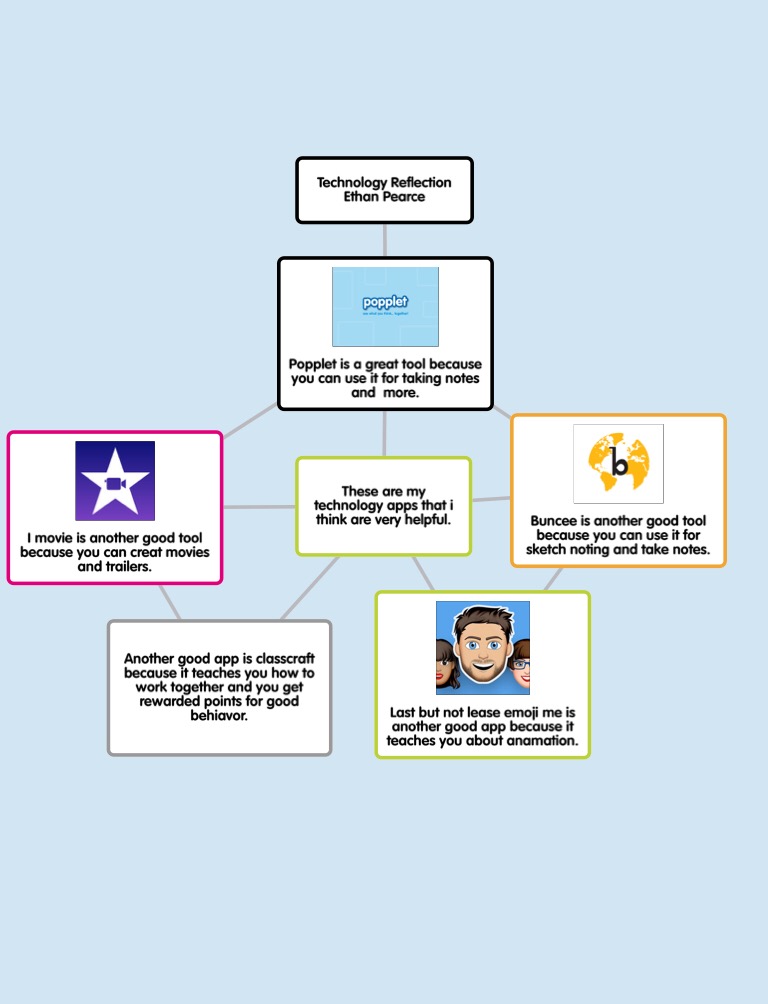
iMovie
Students love the ability to create using iMovie and are currently working on a year-long project titled the "Year-Long Reading Review" which will be completed documentary style, hopefully.
[wpvideo okgIfSm8]
ShowMe
The white board app called "ShowMe" is used to draw and create freehand, with integrated pictures and recording ability. Many have integrated their "ShowMe" creations into other applications, such as iMovie.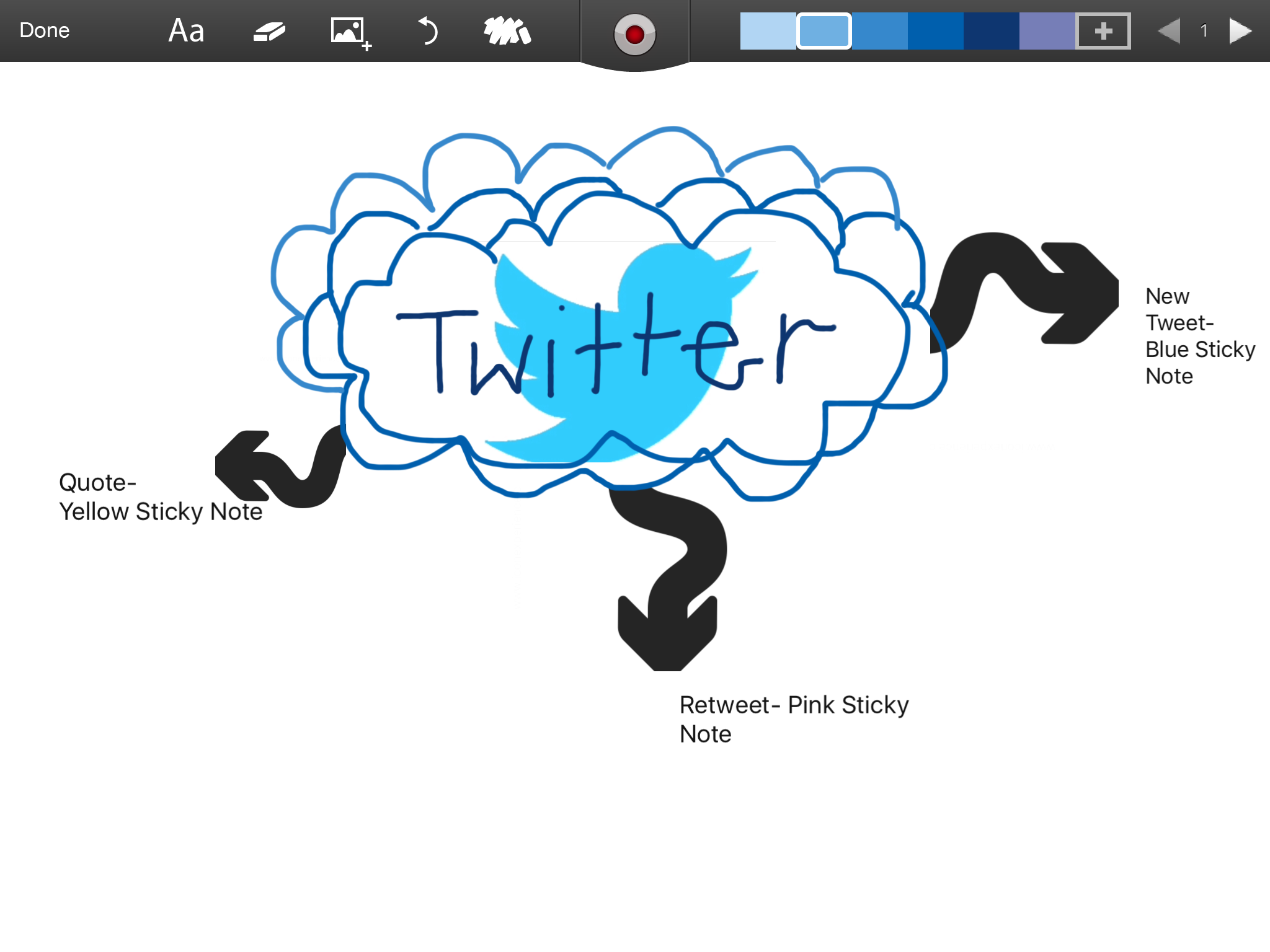
Buncee
Buncee is another great tool that students use to create for many different purposes. It has a variety of components that when pieced together, can result in a comprehensive student presentation that contains pictures, text, and even animation.
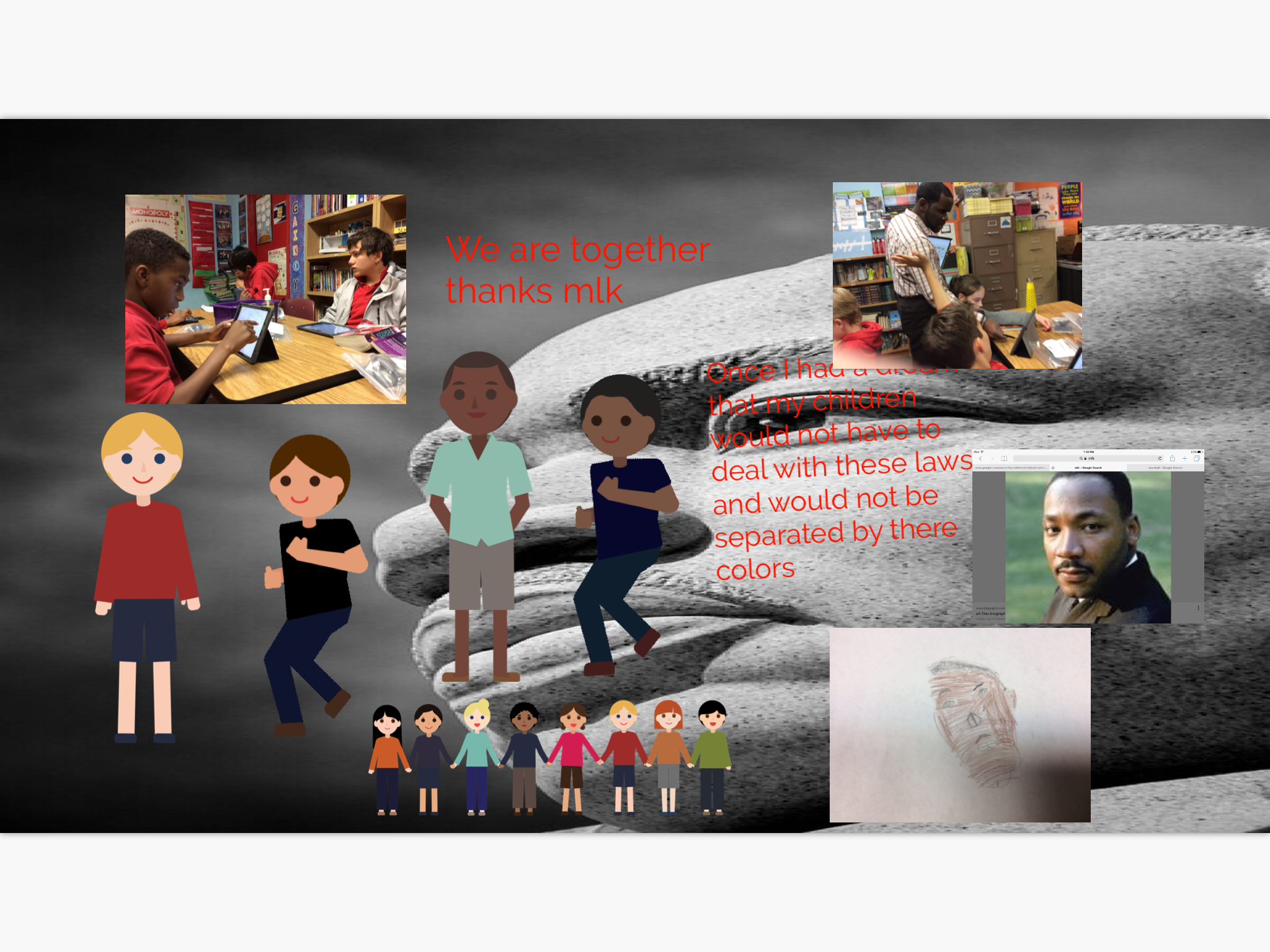
Tellagami
Tellagami is another great app used to animate oneself. Students take a character and tweak it to look like themselves. From that they can record voice and add to the animation, or use voices that come with the app. It is a fun way to create using voice as well as appropriate background scenery and character costuming.
Emoji Me
I love Emoji Me, simply because students can form visual representations of themselves as well as characters from a text, for example, based on author description. I love providing students will tools to bridge the visual learning with what they are hearing.
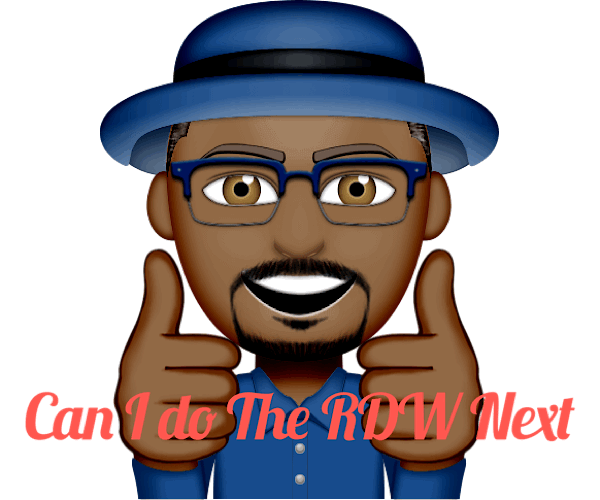
Telestory
Telestory is the newest app introduced to Students because of its versatility in telling a story. From creating a news show, to featuring a band or even the Eye Spy scenario, this app allows students to experiment with augmented reality, adding overlaying costumes, sound effects and other features into a seamless video format which can then be exported as complete video and shared.
Inspiration
Inspiration is an app that allows students to organize information visually using an assortment of graphic organizers as well as pictures that can be associated with topics in every subject area. This is great for visual learners.
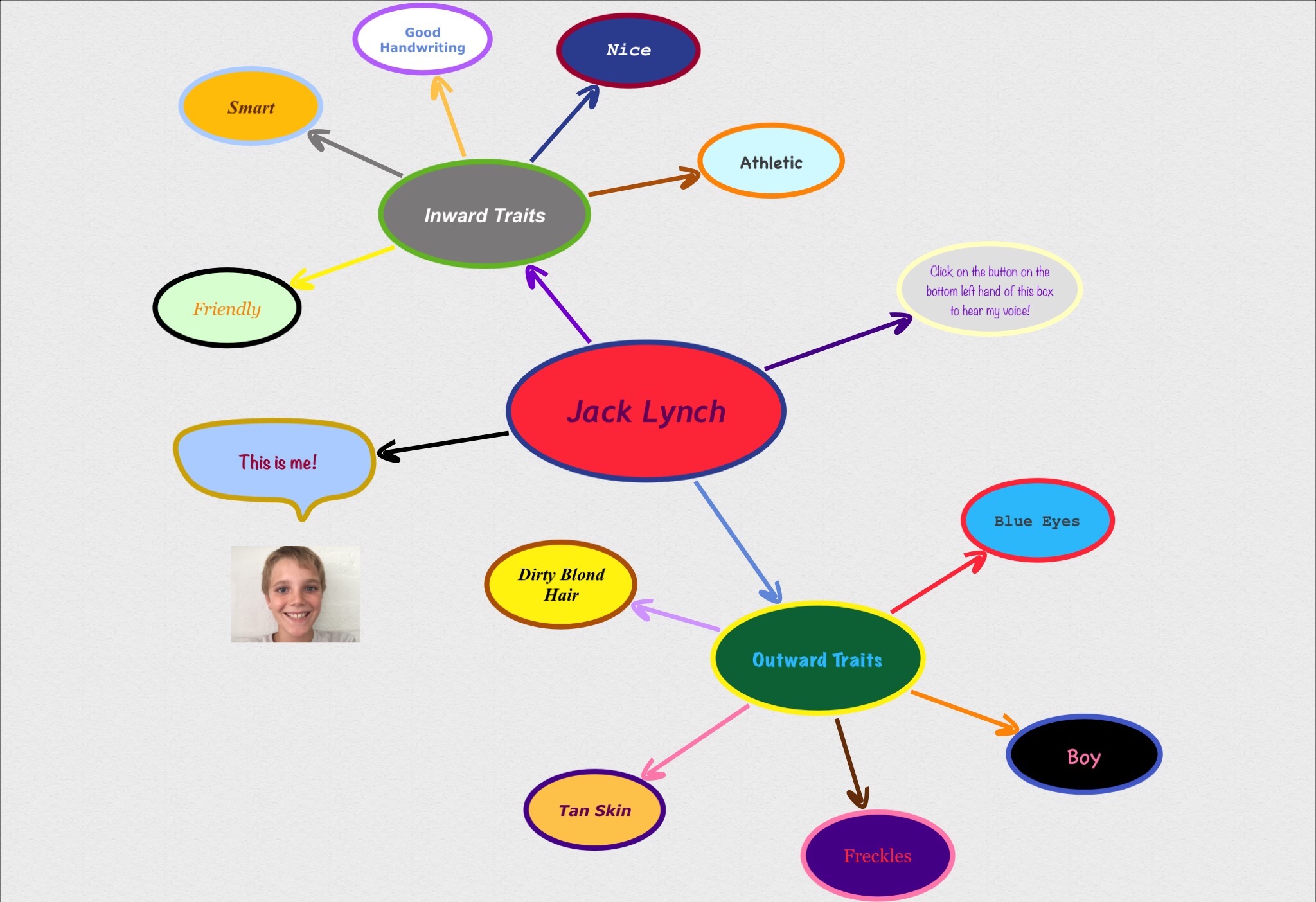
Chatter Pix
Chatter Pix Allows students to create characters and animate them as well, by adding in their voices. Example below.
[wpvideo DHxGljWJ]
To recap, I have shared these apps because they are tools that have been employed in the classroom. Students are able to use them at any time to accomplish tasks and demonstrate and/or showcase learning. The likelihood of learning becoming a chore or boring is lessened when we are able to approach learning from a variety of different ways. Tools. We need tools in order to accomplish tasks successfully. Without the appropriate tools:
- We are stiffened.
- We are limited to one way.
- We are boxed in.
- We lack motivation.
- We are stuck.
But being provided access to the tools opens the doors to success. Success for one may not be success for another, which is another reason why offering variety is important. I am grateful for the tools that lead to success, whatever that success may be.
Telestory
I have recently learned about an iPad app called "Telestory" which essentially allows those who use it to "tell a story" in several different ways. So far, my students and I have played around with the News Broadcast idea, which includes options for news anchors reporting from the desk, an "eye in the sky", the beat, the sports roundup, a critic section, a weather report feature and an empty slot which can be filled with a creative student choice. Students are able to add multiple anchor stories, augmented reality attire, such as police hats, goggles and even wigs. Telestory is free at this time and is a great way for students to "create" their own show. Below is an example of a practice Telestory video that the students and I created in the classroom as an introduction to the app. They are absolutely thrilled to continue to work with it to create and tell stories. This was a practice for us, so the kids randomly discussed things; don't take this one too seriously. [wpvideo l04tImBe]
Creating Audio with Garage Band
Students are absolutely thrilled to be able to work with garage band to create audio. Now I am able to give Garage Band a purpose, not that they couldn't continue to use it just to create. I have intertwined Garage Band use with podcasting. We are now in the process voting on our third podcast title of the year and students may be able to have their audio featured as background music. [audio src="https://denegainey.files.wordpress.com/2017/03/zeke-podcast-track.m4a"][/audio]
One Example of Audio Track for Submission (Above)
[audio src="https://denegainey.files.wordpress.com/2017/03/hannahs-best-podcast-song-ever.m4a"][/audio]
Example Two of Audio Track for Submission (Above)
[audio src="https://denegainey.files.wordpress.com/2017/03/reids-song-for-podcast.m4a"][/audio]
Example Three of Audio Track for Submission (Above)
[audio src="https://denegainey.files.wordpress.com/2017/03/e191adoe197aae19195e197a9e19495t-e197b0e1918ce19495ie19195-e196b4ee197b7-2017-e19687ie190afee19687.m4a"][/audio]
Audio Track (We used it for Black History Moments)
Students will vote on the best audio track once all have been submitted and that is the track that will be used for that month's podcast. They are stoked about the idea, completely motivated and so am I!
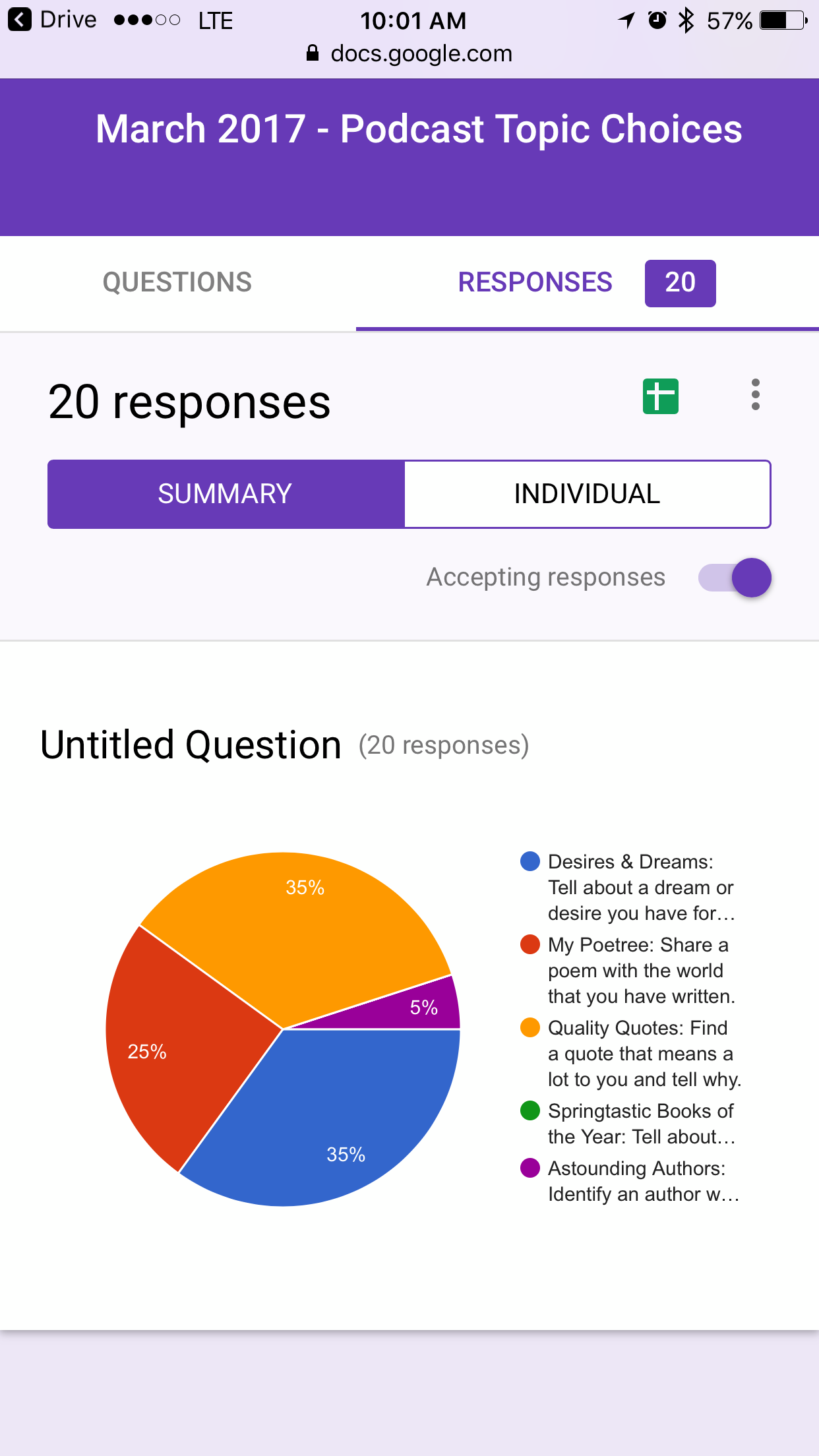
I cannot wait to move forward. This was a quick share, but certainly there will be more to come!
What About the Children?
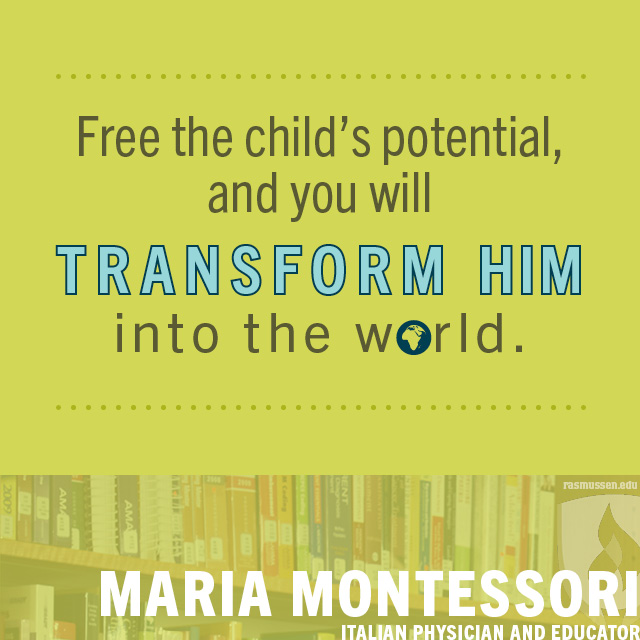 Education is such that there are many stakeholders involved in the teaching and learning (from the students themselves to the powers that be who make decisions that may or may not be in the interest of the students) that transforms minds, encourages hearts and open the doors to opportunity. Education is the light that transcends and illuminates the dark places. Education is the fundamental idea that continues to be important to life...the knowledge and pursuit of happiness. We need to know, have experiences and grow. Students are the primary stakeholders, out of all that we do, we must consider them, because they are the sole beneficiaries of the tremendous work, professional development, and constant growth that we experience as educators. All too often however, students do not drive our decision-making practices.
Education is such that there are many stakeholders involved in the teaching and learning (from the students themselves to the powers that be who make decisions that may or may not be in the interest of the students) that transforms minds, encourages hearts and open the doors to opportunity. Education is the light that transcends and illuminates the dark places. Education is the fundamental idea that continues to be important to life...the knowledge and pursuit of happiness. We need to know, have experiences and grow. Students are the primary stakeholders, out of all that we do, we must consider them, because they are the sole beneficiaries of the tremendous work, professional development, and constant growth that we experience as educators. All too often however, students do not drive our decision-making practices.
If students are not considered when educational decisions are made, are we headed in the forward direction or have we taken steps backwards? That is the focal point of today's post. I believe that all too often, we make decisions that center on ourselves, the educators and the administrators and we think about the students as an afterthought. Our students should be our motivation to persist in accomplishing the task set before us.
People often say that motivation doesn’t last. Well, neither does bathing – that’s why we recommend it daily. ~Zig Ziglar
We have to consistently assess whether what we are doing is effective for the purposes of the children (students). I have asked several education professionals to indulge me by responding to the following statement,
"If decisions are not made with the students in mind..."
You will see several perspectives included in this post and I am grateful to all who responded/participated because I believe your professional opinions and viewpoints are integral to change and valuable to the educational community at large.
Kristin Harrington shares her professional opinions about educational decisions:
"If decisions are not made with students in mind, then schools will not continue to grow. Students essentially are our clients. They "test" our procedures, lessons, and help determine whether the decisions we make are effective. If we are not considering them, then why would we need to make changes, or reflect on our teaching or how our schools are managed. We should be considering what keeps students engaged, how they learn, their interests, their feelings. This what builds a cohesive school staff, and a successful school."
Justin Schleider answers this question:
"If decisions are not made with the students in mind..., there are other factors that are more important. School districts value test scores, funding, parent opinion, and ease all over what is best for students. For example, clear research is ignored showing how movement and free play is more important than math and science for the development of children. Research should not be 'cherry-picked' to suit needs. "
Tammy Neil is standing on the following words:
"If decisions are not made with the students in mind... then we shouldn't be surprised when the students do not MIND the decisions. If we don't keep them in mind, how do we expect them to follow through on those decisions that were made without them? Students should be in the forefront."
Makisha Rogers states:
"A lot of teachers at her school do make decisions with the student in mind. From providing worksheets, to creative ways of student assessment on multiplication for example. Lesson delivery and instruction still bears in mind student needs, however tends to reflect teacher comforts. She further says that:
If decisions are not made with the students in mind... you are resistant to change and you are being selfish and not thinking about what students need TODAY."
Dr. Dorian Roberts shares the following:
"If decisions are not made with the students in mind..., it leads to chaos and debacle. It also leads to a decrease in student achievement and student engagement."
Shervette Miller-Payton states the following:
"If decisions are not made with the students in mind... the school will probably suffer and not be productive or successful."
Dan Koch offers the following:
"If decisions are not made with the students in mind..., we basically condemn kids to being silent partners in this educational process." If we are going to make decisions at our educational institutions and we don't think about what kids need, how they will react to policies that we enact at school sites and how we assess them, and how they their day-do-day happens, it is this big round-table of adults that says we know best. In large part, these are adults that haven't been in a classroom or are so far-removed from being a kid that those decisions are not based on any kind of reality. It's this weird nebulous place that looks good on paper. It has to be put into practice so what is best for students is kept in mind."
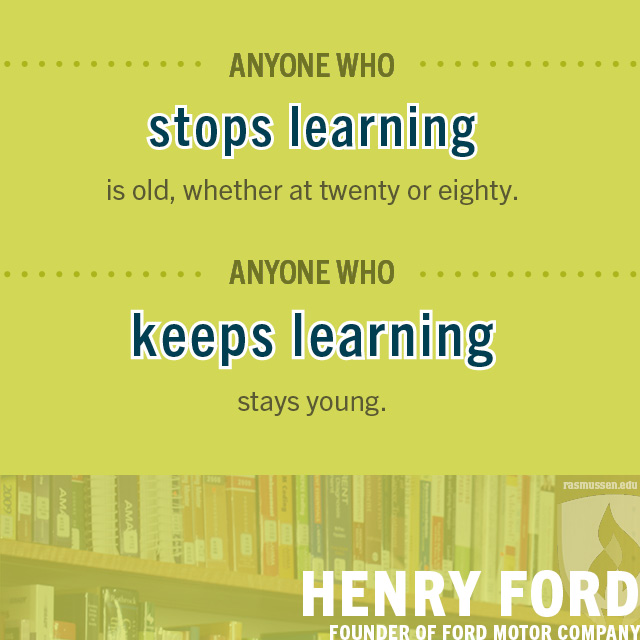
Sarah Thomas contends that:
"If decisions are not made with the students in mind...then what are we really doing?"
Toutoule Ntoya says that:
"If decisions are not made with the students in mind..., then the decision doesn't matter." It doesn't matter and the decision has no impact. At the end of the day, it is all about the kids, whether its interaction with parents, the community or interaction with other teachers.
Clearly what we do in the education realm and how we do it is integral to achieving the right outcomes. I will end here with my own thoughts and that If decisions are made without the students in mind, we are in essence robbing them of their futures. We should definitely evaluate as educators, as schools, as administrators and as educational bodies whether what we are doing is in the students' best interest or ours. Much to think about. Until next time.
"True teachers use themselves as bridges over which they invite their students to cross; then, having facilitated their crossing, joyfully collapse, encouraging them to create bridges of their own." --- Nikos Kazantzakis
It's Worth It!
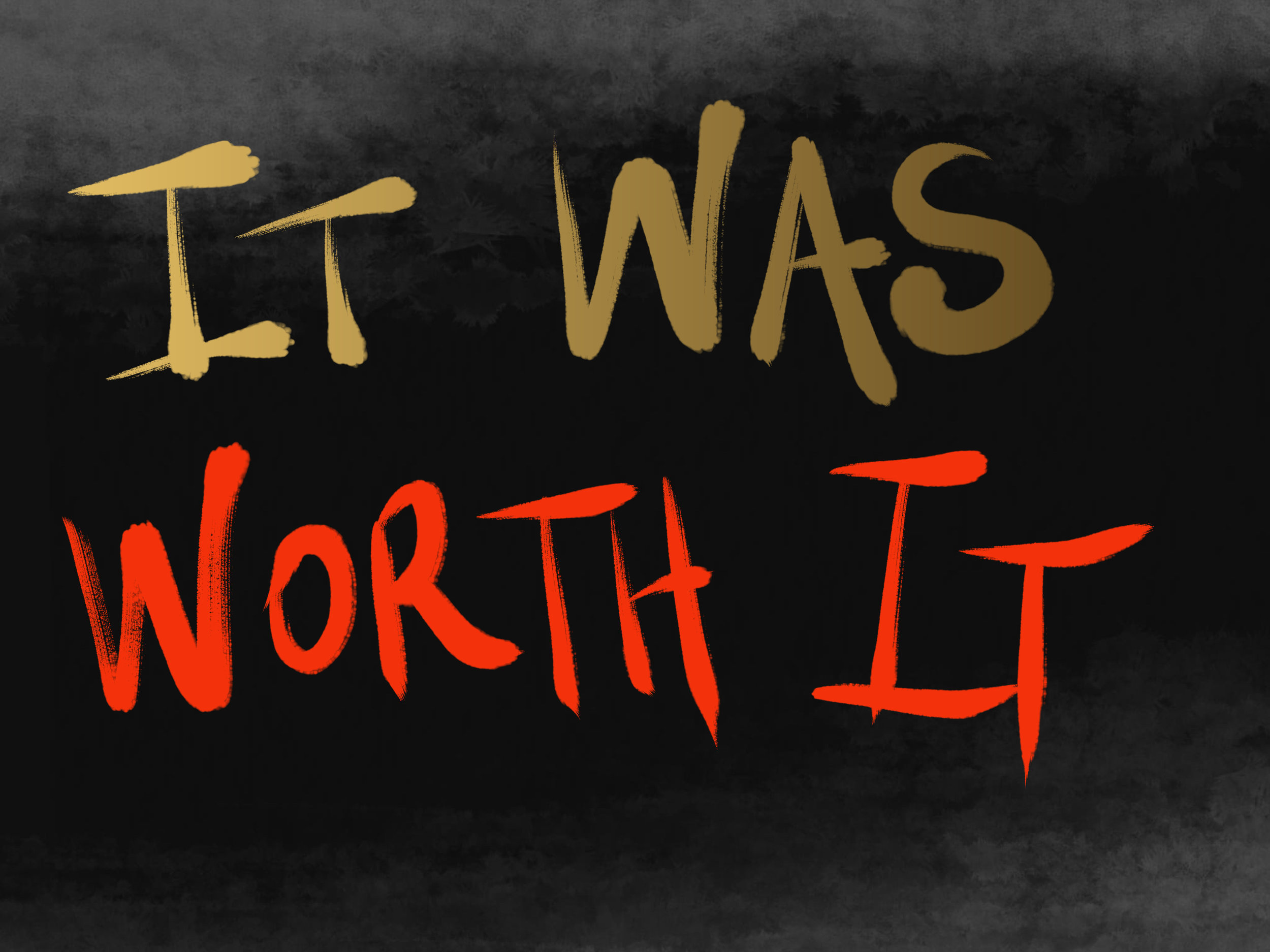 Now you might say what I have said many times, or asked myself...Is it really worth it? We think of our duty as educators to shape, mold and educate the young breed as a calling. I couldn't agree more about the nature of the role an educator plays. It's about something bigger than ourselves. It's a larger than life kind of niche, so much so that the educator plays a central role in the lives of students, dedicating his or her life to instilling in a child the tools and skills necessary to take on a world that continues to grow and change. That's a tall order.
Now you might say what I have said many times, or asked myself...Is it really worth it? We think of our duty as educators to shape, mold and educate the young breed as a calling. I couldn't agree more about the nature of the role an educator plays. It's about something bigger than ourselves. It's a larger than life kind of niche, so much so that the educator plays a central role in the lives of students, dedicating his or her life to instilling in a child the tools and skills necessary to take on a world that continues to grow and change. That's a tall order.
The truth is that the integral seat that educators sit in is not always easy to occupy. In fact, some may say that it is never easy to occupy. Teachers touch tomorrow. Teachers touch today. Teachers made tomorrows easier today. In the words of Dr. Dorian Roberts, we make it look easy. But it is certainly far from that!
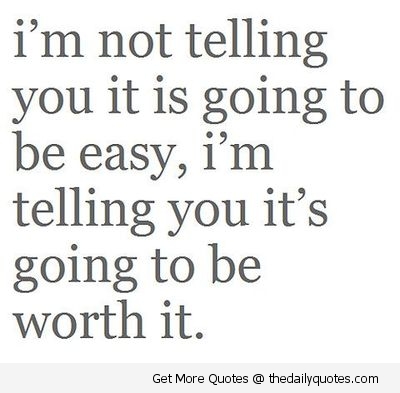
If the truth was to really be told, there are days where I wished I could have slept in on a Monday morning (and maybe not just Monday), whether the weekend was short or long, but the alarm went off (5:15 early), I got up and made my way to work. After my routine Starbucks run, I end up at work, first one there, dragging as I sip every ounce of my Venti hot caramel macchiato, extra shot. Like the flick of a light switch and once I get into the classroom, something happens! I am reminded of the job set before me, not the one I get paid for, but the one I am called to and happen to be compensated for in the process. The creative, enthusiastic facilitator of learning comes alive in me (not to say that it ever sleeps). The espresso just brings him back. Ha!
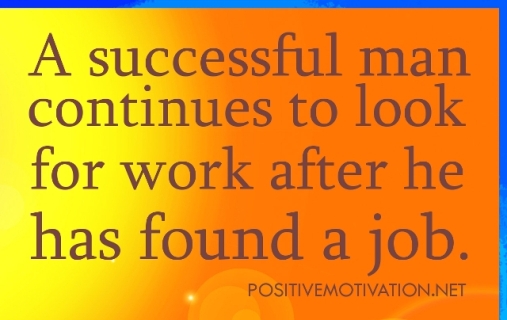
The lesson plans, the committee meetings, the staff meetings, the parent conferences, the grading, the paperwork, the after school clubs, the tutoring, the school even nights, is it really worth it? How do you measure success? Is success the educator who stops learning? Is the successful educator the one who thinks that there is nothing more to learn or do? It is a lot to juggle all of these tasks associated with the the educational seat we sometimes so comfortably sit in. Is it worth going to that compelling conference, establishing that powerful PLN, or attending that engaging EdCamp? Well, when you consider the potential outcomes, I think the answer is clear. There is ALWAYS room for growth.
Consider the student that is always eager to get to your class because there is always wonder involved in the learning process. Think about that kid that only you are able to reach. Don't forget about the student who may have some behavioral concerns, but respects you so much and listens to you. Maybe it's that student that you have become an advocate for. The student who only has one parent (or two) and you easily become the other, or the third. Consider the long-term impact of you taking the time to make a difference in the life of child, when you can develop REALationships with them! A REALationship is a teacher-to-student connection that is REAL, authentic, intentional and impactful.
What you do on a daily basis will carry on beyond you. I will be the first to say IT IS NOT EASY to walk in the large shoes of an educator who never sits down, but constantly seeks to learn and grow so that the students can continue to learn and grow. I will say though that IT'S WORTH IT.
“Follow your dreams. I am not saying it’s going to be easy, but I am saying it’s going to be worth it. – Moffat Machingura”
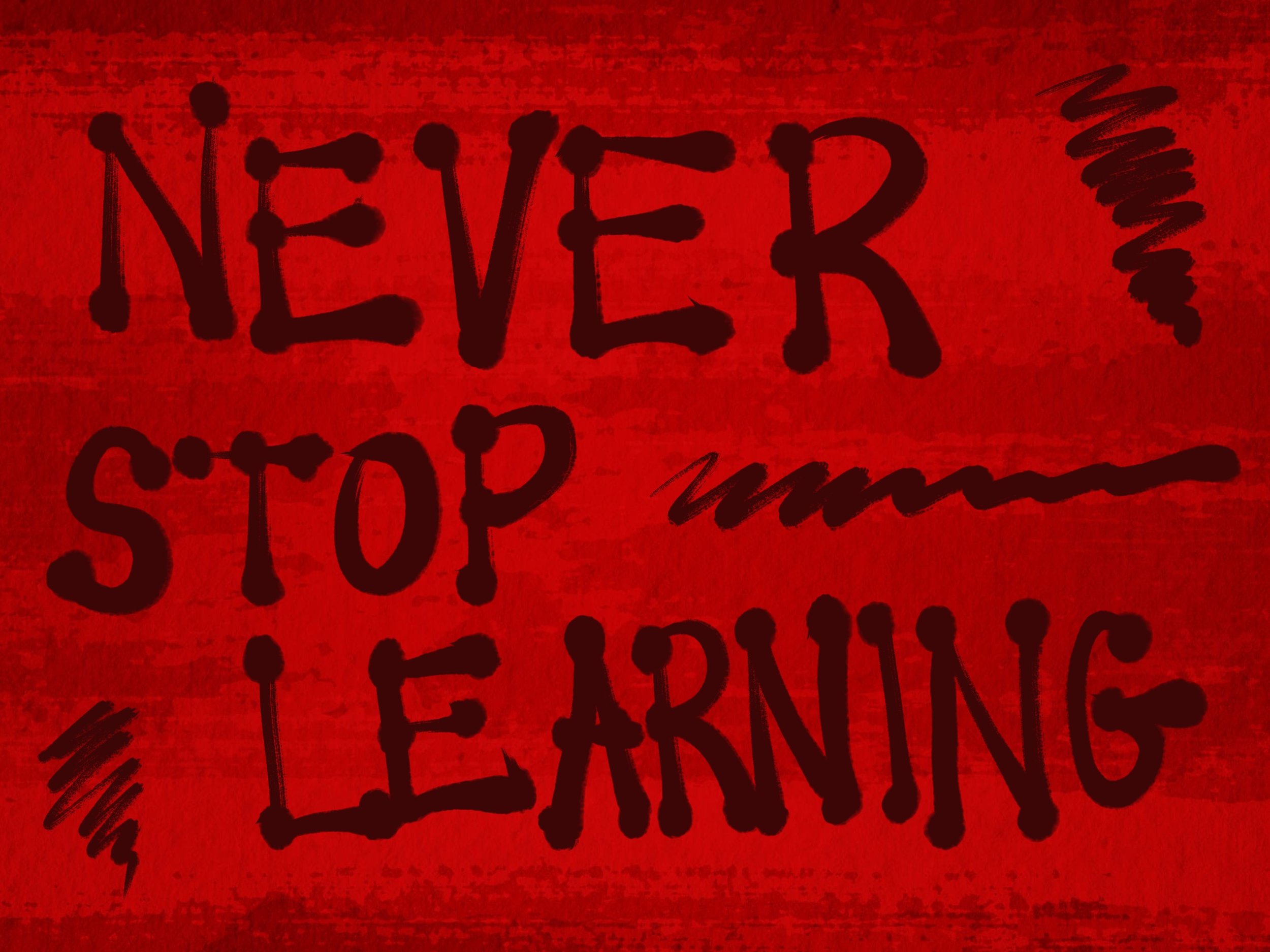
Responsibility: To Know it & To Teach It
I have to say that I grew up in a home that was big on responsibility and making good choices. I didn't always make them, however that was the general expectation as I grew and developed into the independent individual I am today. Today I look back and realize that I am a product of my upbringing and without the lessons learned, I would still be learning them today as an adult, or worse.
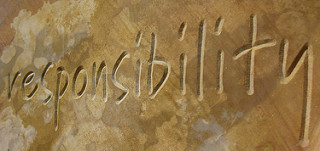
This brings me to the point of this blog post. I will be slightly vague in this post, however I had an experience recently where I understood that instructions were given from home to school that were inconsistent with my expectations of students and the structure of the classroom. I couldn't help but ask myself in the moment "Are we cultivating a society that is irresponsible and without care?" The reason for the question is simply that I never teach with respect to a school year, or a term. I teach with respect to life, integrity and character. I choose to never excuse my students from responsibility, but rather encourage them to embrace responsibility head on. If they do something wrong, be truthful about and take responsibility for it. In my mind, this is the only way that growth can occur. In order to become better, I must first realize where I need work or help.
Winston Churchill said "The price of greatness is responsibility." Do we want our students to be great?
The same goes for when students are expected to come to school ready to dive into learning. Now of course I would never ignore Maslow's hierarchy of needs, acknowledging the fact that there are physiological needs that must be met before learning can take place. To go further, you might even say that taking the time to have teachable moments in the classroom, out-of-the-classroom and at every available opportunity is still meeting a need. So again, my point is that I feel that students need to have experiences, they form the impetus for learning and teachable moments.
If you want children to keep their feet on the ground, put some responsibility on their shoulders.
~Abigail Van Buren
If I had never been allowed to fail, I would not truly understand what it meant to succeed. If I was never given the opportunity to learn responsibility, then I might be irresponsible today. I believe it is important to note that school, at least for me as a teacher, is not simply six and a half hours of rhetoric and academia. What good is all that anyway without a focus on character, integrity, honesty and responsibility?
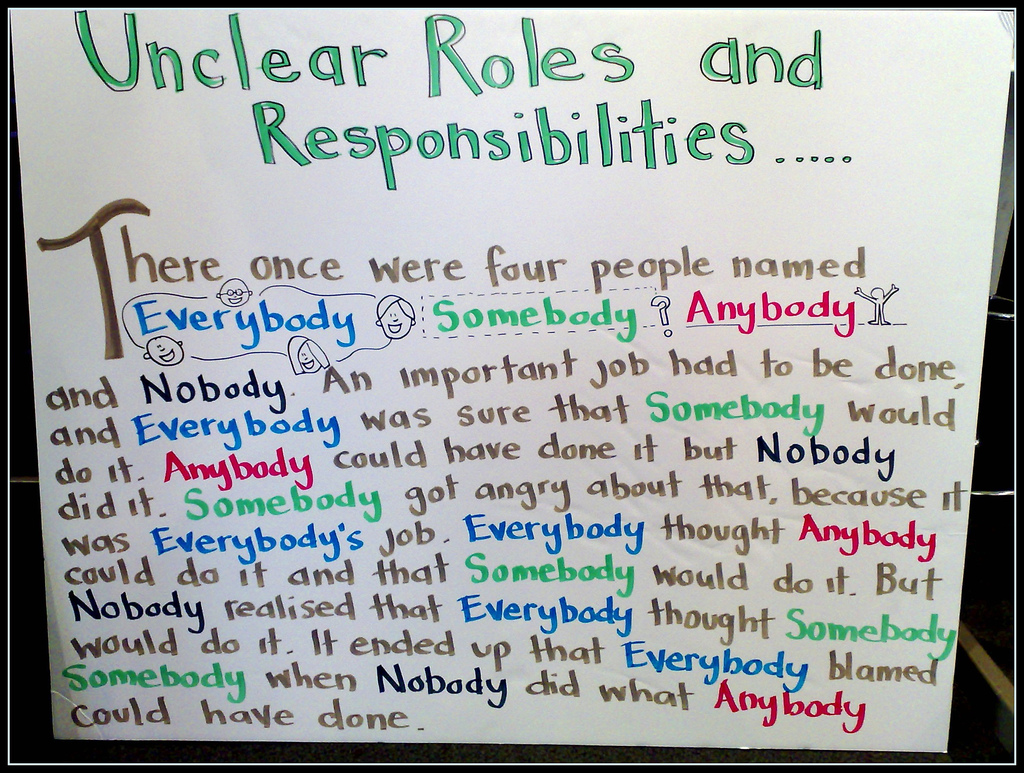
Ninety-nine percent of all failures come from people who have a habit of making excuses."
I often tell my students that intelligence is great, in fact it pays to "know," but what good is all of that knowledge when you are not able to pass it on to others? Character goes a LONG way. I tend to paint that picture that when it comes to that grand job, or that ivy league school of choice, what is it about you that would make you stand out from the crowd? Consider someone who is at the top of his or her class academically, but lacks the wherewithal to socially relate to his or her peers, colleagues or higher ups. Hence, as an educator, I believe in teaching students those elements of character, that along with academic success, paint a much cleaner and clearer painting on the wall for all to see.
Responsibility is a life skill. Why not start today in school with parents joining in with teachers in order to wet the student's appetite with responsibility? Instead of excusing behaviors, what would happen if we turned them into teachable moments. Yes you did this, but let's talk about how we want and need you to learn to engage responsibly. After all, the ultimate goal is for them to become an upstanding member of society, a leader, a servant, an individual. A little bit of responsibility can go a long way, as it continues to develop over time. I believe we (educators and parents) must be intentional with our interactions and support of students because after all, these individuals will one day need to pass on these values to others.
"Success on any major scale requires you to accept responsibility . . . . In the final analysis, the one quality that all successful people have is the ability to take on responsibility."
— Michael Korda Editor-in-Chief, Simon & Schuster
